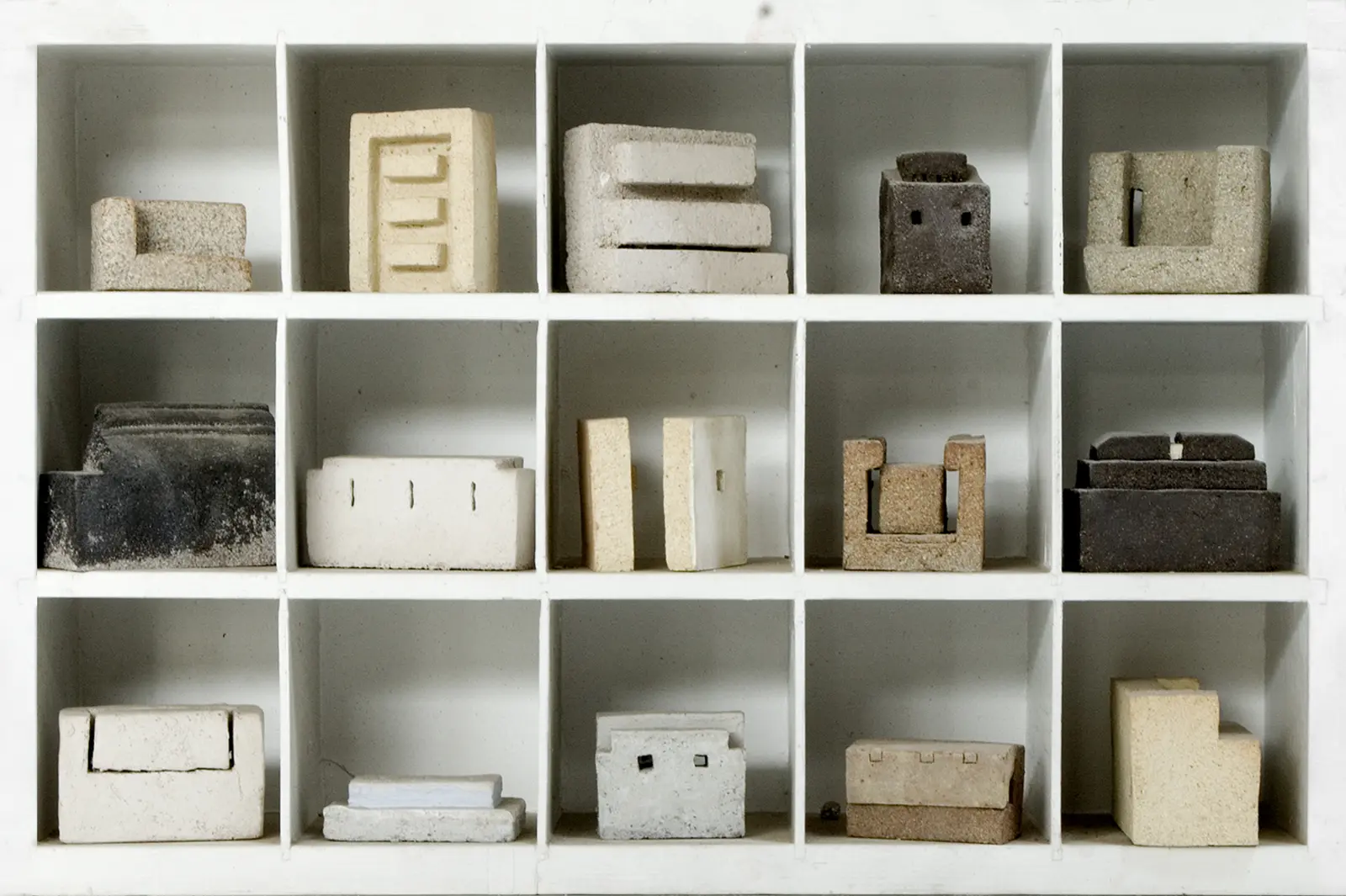Originally trained in painting, sculptor ceramist Enric Mestre Estellés that born 1936, studied at San Carlos Fine Arts School in Valencia and the ceramics school in Manises. During his time as a ceramics student, he met Alfonso Blasco and connected whit the artistic interests of this ceramist. The artist, in the thirties, alongside other such as Llorens Artigas and Francisco Ibáñez, took Spain into the mainstream of modern ceramic art.
Mestre, both as a teacher and practitioner, has himself come to be regarded as an important liberating link between this formative generation and that of Spain’s younger avant-garde and he has been recognized worldwide for his sculptural objects. Influenced by the ceramics of the Far East, his propositions were based on using high temperature bodies and investigating new vitrifications and glazed that made. This made unnecessary to employ painted ornament in the traditional manner.
Enric Mestre’s art is evocative as boxlike, slab built architectural structures of austere colors dominated by right angles. Objects of an interlocking geometry, of light and shadow, that create tableaux to the imagination whit a poetic charm which saves them from only being rational and cold. Though these objects are often carefully planned and developed. Mestre insists on intuition as if obeying a kind of constructive poetics restraining and controlling personal expressions without eliminating them.
